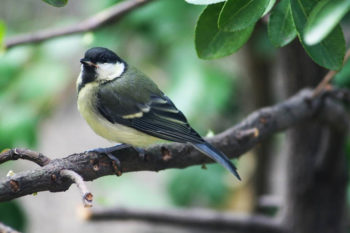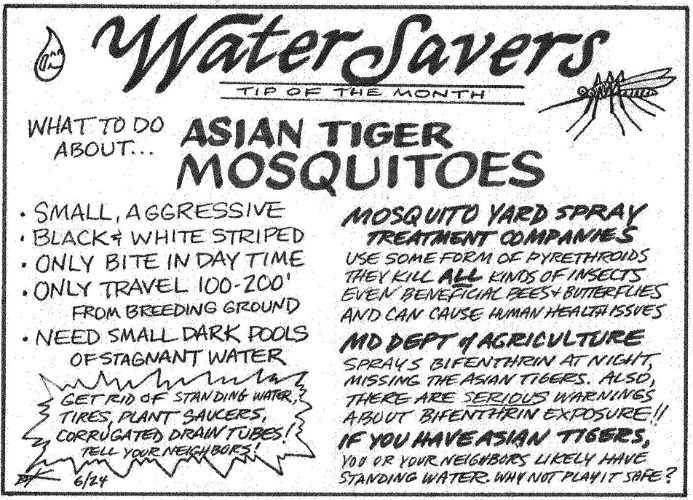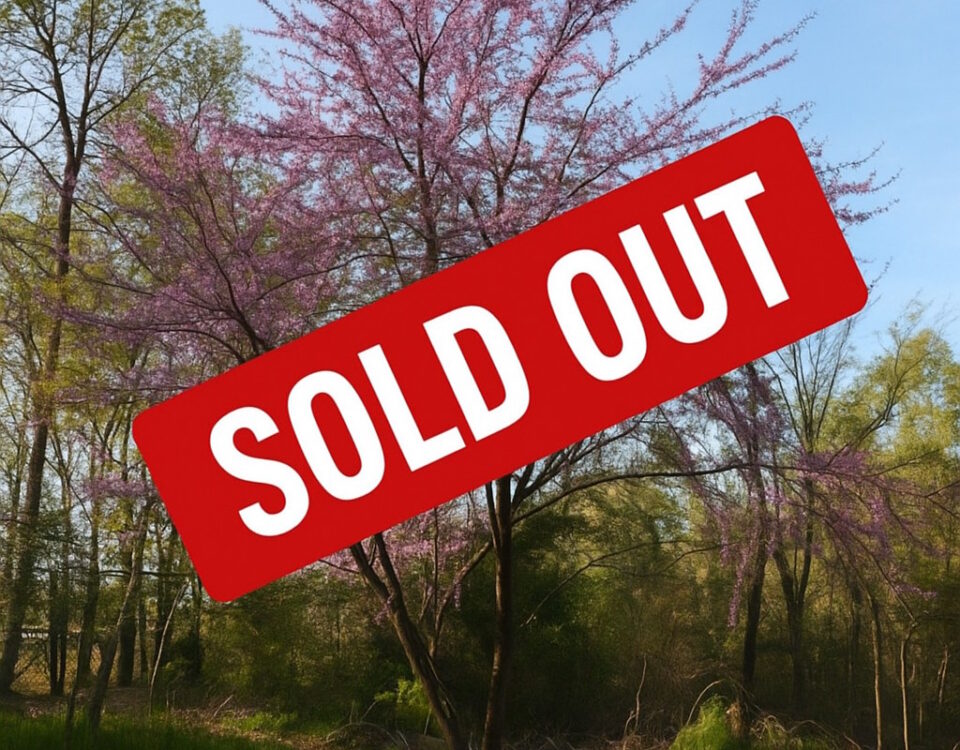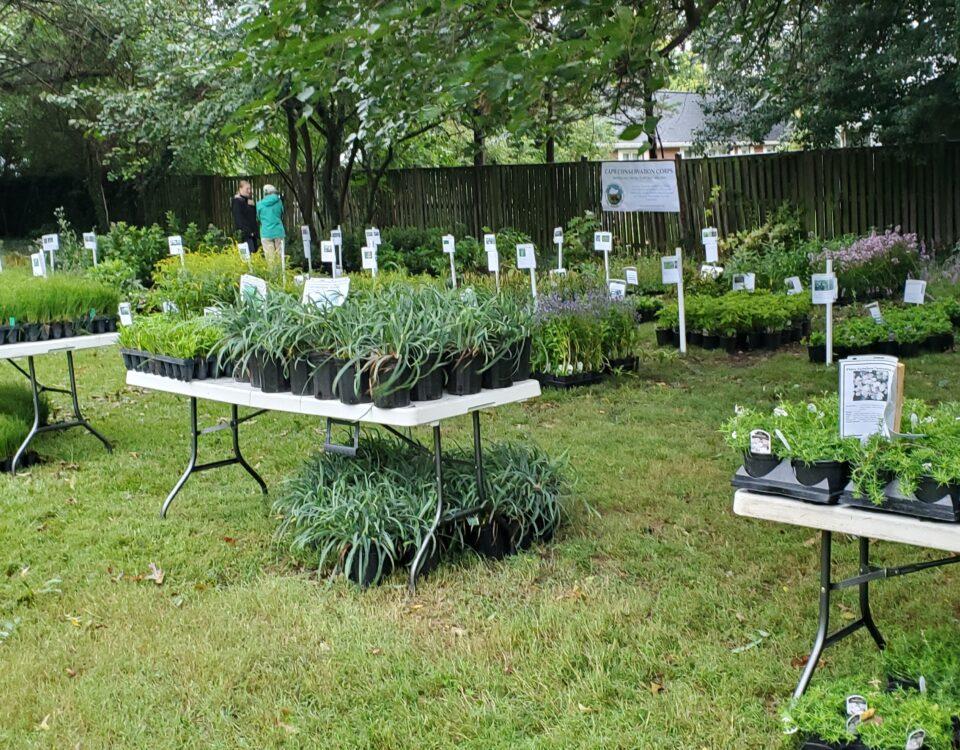Re-Thinking Your Fall Chores
September 1, 2016
Oyster Habitat Interview with Larry Jennings
November 1, 2016By: Stacey Wildberger – October 2016
There are many reasons people choose to feed birds and create bird-friendly habitats in their own backyards: from aesthetics, connecting children with nature, and conservation, or just personal enjoyment of birds. While placing a few feeders around your yard is a good start, birds require more than just seed provided in a feeder. They need food, water, shelter and “greening”.
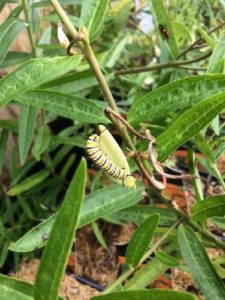 Did you know that 96% of birds rely on insects to raise their young, and it takes more than 5,000 caterpillars to raise one clutch of chickadees?! By growing native plants you can provide the needed food for adults as well as baby birds. Where do all those caterpillars come from that are needed to feed birds’ young? There are many native trees that support hundreds of species of caterpillars and other insects. Oaks support over 500 species of caterpillars, cherries and willows support over 450 species of caterpillars, and birches support over 400 species. Many native shrubs produce fruits that birds love, including blueberries, viburnums, chokeberry, hollies and winterberries.
Did you know that 96% of birds rely on insects to raise their young, and it takes more than 5,000 caterpillars to raise one clutch of chickadees?! By growing native plants you can provide the needed food for adults as well as baby birds. Where do all those caterpillars come from that are needed to feed birds’ young? There are many native trees that support hundreds of species of caterpillars and other insects. Oaks support over 500 species of caterpillars, cherries and willows support over 450 species of caterpillars, and birches support over 400 species. Many native shrubs produce fruits that birds love, including blueberries, viburnums, chokeberry, hollies and winterberries.
Beautiful native herbaceous plants provide seeds for birds, including blazing star, goldenrod, black eyed-Susan and coneflower. Hummingbirds love the bee balm and the red cardinal flowers growing in my yard. Grasses such as Little Bluestem (Schizachyrium scoparium) provide seeds for many small birds. If you leave the plants standing through the winter you will not only have winter interest to look at but the birds will have a natural supply of seeds. The goldfinches have been all over my coneflowers already! By planting natives you are creating a biodiverse ecosystem supporting the natural foods birds depend on.
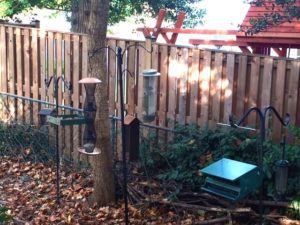 Of course bird feeders can offer supplemental feeding. There are many options, including tray/platforms feeders, hopper feeders, tubes, nyjer feeders to nut feeders. Nuts will attract a wide range of birds from ravens, crows, woodpeckers, towhees, juncos, chickadees and nuthatches. The bluebirds, towhees, grosbeaks, wrens and woodpeckers love the mealworms—dried ones work as well as love ones! Use a thistle feeder filled with nyjer to attract finches, pine siskins and redpolls. The majority of song birds will enjoy high quality seed mixes. Try to avoid fillers such as red milo, wheat and dyed seeds, instead use sunflower seeds, white proso, millet or peanut hearts. Hummingbirds will be attracted to homemade nectar using 4 parts boiled water to 1 part sugar. Never use hummingbird food with red dye! Don’t forget to clean your feeders every couple of weeks. Use 9 parts water to 1 part bleach to disinfect the feeders and be sure to rake up old and discarded seed and avoid overcrowding of feeders to prevent the spread of diseases.
Of course bird feeders can offer supplemental feeding. There are many options, including tray/platforms feeders, hopper feeders, tubes, nyjer feeders to nut feeders. Nuts will attract a wide range of birds from ravens, crows, woodpeckers, towhees, juncos, chickadees and nuthatches. The bluebirds, towhees, grosbeaks, wrens and woodpeckers love the mealworms—dried ones work as well as love ones! Use a thistle feeder filled with nyjer to attract finches, pine siskins and redpolls. The majority of song birds will enjoy high quality seed mixes. Try to avoid fillers such as red milo, wheat and dyed seeds, instead use sunflower seeds, white proso, millet or peanut hearts. Hummingbirds will be attracted to homemade nectar using 4 parts boiled water to 1 part sugar. Never use hummingbird food with red dye! Don’t forget to clean your feeders every couple of weeks. Use 9 parts water to 1 part bleach to disinfect the feeders and be sure to rake up old and discarded seed and avoid overcrowding of feeders to prevent the spread of diseases.
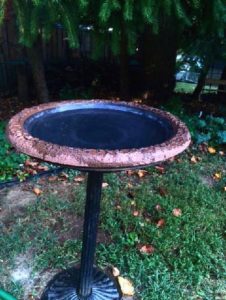 Water is another essential component to your backyard birding habitat both for bathing and drinking. The chickadees splashing in the water just look like they are having a great time. Bird baths should be less than 3” in depth and changed every 2-3 days to avoid mosquito breeding. Place them near shelter that they can access to escape predators. Adding a heater to your bird bath will help birds in the winter when water is scarce. The native plants mentioned above as a food source can also be used as shelter. The Eastern Red Cedar not only has berries that the elegant Cedar Wax Wing loves to eat but is a great place to nest and hide out in. Many birds nest in shrubs as well as using them to escape danger. Alders, Elderberry and Arborvitae are also excellent sources of shelter. You can also place nesting boxes in your yard for bluebirds, nuthatches, titmouse, owls and chickadees to raise their young. Leaving a “snag” (standing dead trees) not only provides food for woodpeckers but also provide shelter for cavity birds such as woodpeckers, wrens, and owls. There are other ways to encourage birds to nest in your yard such as offering nesting material they can use-strings, fluff, dry grasses, twigs, moss. Many of the materials will be readily available from the natives we have planted to start this habitat. Brush piles also offer a safe to place to nest or seek shelter in. I typically take the fallen limbs and twigs lying around the yard after a storm and make piles around or near feeding areas.
Water is another essential component to your backyard birding habitat both for bathing and drinking. The chickadees splashing in the water just look like they are having a great time. Bird baths should be less than 3” in depth and changed every 2-3 days to avoid mosquito breeding. Place them near shelter that they can access to escape predators. Adding a heater to your bird bath will help birds in the winter when water is scarce. The native plants mentioned above as a food source can also be used as shelter. The Eastern Red Cedar not only has berries that the elegant Cedar Wax Wing loves to eat but is a great place to nest and hide out in. Many birds nest in shrubs as well as using them to escape danger. Alders, Elderberry and Arborvitae are also excellent sources of shelter. You can also place nesting boxes in your yard for bluebirds, nuthatches, titmouse, owls and chickadees to raise their young. Leaving a “snag” (standing dead trees) not only provides food for woodpeckers but also provide shelter for cavity birds such as woodpeckers, wrens, and owls. There are other ways to encourage birds to nest in your yard such as offering nesting material they can use-strings, fluff, dry grasses, twigs, moss. Many of the materials will be readily available from the natives we have planted to start this habitat. Brush piles also offer a safe to place to nest or seek shelter in. I typically take the fallen limbs and twigs lying around the yard after a storm and make piles around or near feeding areas.
Birds need our help to stay safe in the habitats we have created for them. We can care for them by keeping our cats indoors, turning off the lights at night, eliminating pesticide use (encourage natural predators, reduce amount of lawn) and leave the leaves! Leaf litter is an important habitat for overwintering insects that the birds can use a valuable food source. The use of decals, screens or bird tape can help to decrease window collisions as well. Backyard birding can be an enjoyable and relaxing hobby and a great way to connect kids to nature. I welcome the opportunity to sit and observe the birds with my kids so they can learn to appreciate the importance of nature and the birds’ place in the ecosystem. There are many great resources out there to help identify the birds you are seeing and hearing as well as learning more about their needs and record what birds you are seeing. Check out ebird, Lights out Baltimore, Project FeederWatch and Yard Map. Join our Facebook Group: Cape Birds, to share what you are seeing in your own backyard with fellow Cape Residents.
Happy Birding!


